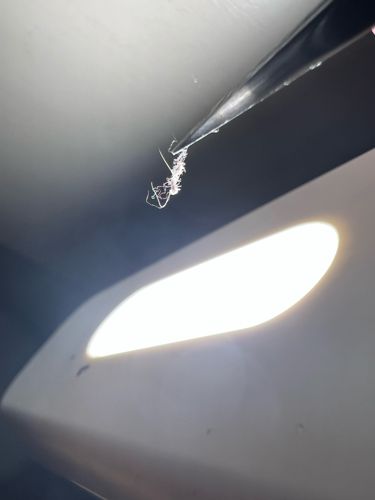Tussock Moth Caterpillar (shed skin/exuvia)
Scientific Name: Family Erebidae (subfamily Lymantriinae) or similar families within Lepidoptera
Order & Family: Lepidoptera (Moths and Butterflies), Family Erebidae (or similar, based on larval morphology)
Size: Caterpillars: 2-5 cm (0.8-2 inches) in length. Exuvia (shed skin) will be similar in size to the caterpillar at the time of molting.

Natural Habitat
Found on various trees and shrubs, including oaks, birches, and fruit trees, typically in forests, woodlands, gardens, and urban green spaces. The pictured item is likely a shed skin and would be found where the caterpillar once was.
Diet & Feeding
Herbivorous. Caterpillars feed on the leaves of a wide range of deciduous and evergreen trees and shrubs.
Behavior Patterns
Tussock moth caterpillars are known for their distinctive tufts of hair (tussocks) and sometimes bright colors. They undergo several molts (instars) before pupating. The image appears to show the exuvia (shed skin) of a caterpillar, which is a common occurrence during their growth. Some species are solitary, while others may be found in groups. Many have urticating (stinging) hairs as a defense mechanism.
Risks & Benefits
Risks: Many tussock moth caterpillars possess urticating hairs that can cause skin irritation, itching, rashes, and allergic reactions in humans upon contact. In some cases, if inhaled, these hairs can cause respiratory issues. Large infestations can lead to defoliation of trees, causing stress or even death to the plants. Benefits: As with most insects, they play a role in the food chain, serving as food for birds and other predators. They can also aid in nutrient cycling.
Identified on: 10/31/2025